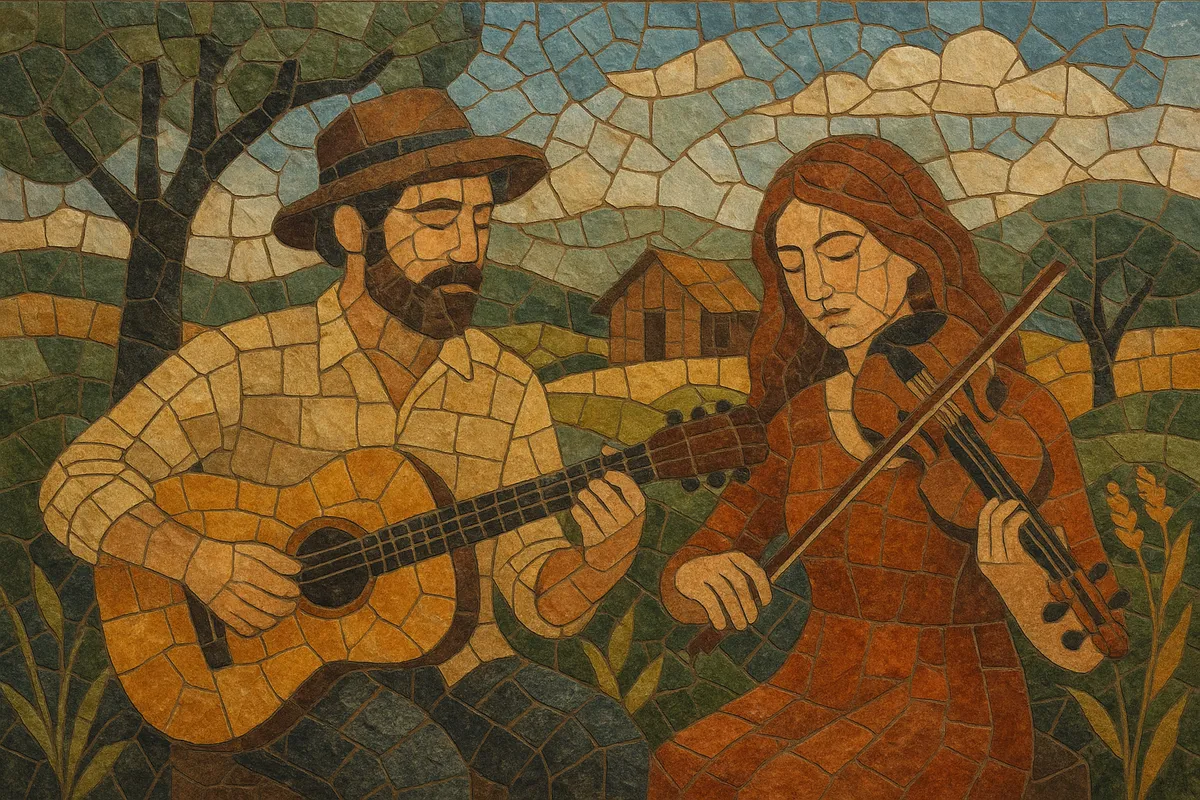Folk is a song-centered acoustic tradition rooted in community storytelling, everyday life, and social history. It emphasizes clear melodies, simple harmonies, and lyrics that foreground narrative, protest, and personal testimony.
As a modern recorded genre, folk coalesced in the early-to-mid 20th century in the United States out of older ballad, work song, and rural dance traditions. It typically features acoustic instruments (guitar, banjo, fiddle, mandolin, harmonica), strophic song forms, and participatory singing (choruses, call-and-response).
Folk as a modern category emerges from community-based traditional music: Anglo-American ballads, African American spirituals and blues, work songs, and rural dance tunes. Song collectors and ethnomusicologists—including Francis James Child, the Lomaxes, and Cecil Sharp—documented this repertoire, linking older oral traditions to a new public consciousness.
During the Great Depression and Dust Bowl years, folk repertoire became a vessel for social commentary. Artists such as Woody Guthrie and Lead Belly popularized topical ballads, while union and protest singing crystallized folk’s association with grassroots politics. Early ensembles and radio broadcasts helped standardize repertoire and style.
The postwar revival brought folk into urban bohemian spaces, college campuses, and coffeehouses. Pete Seeger, The Weavers, Odetta, Joan Baez, and a young Bob Dylan carried the music to mainstream audiences. The era emphasized sing-alongs, topical songwriting, and acoustic performance integrity, while folk festivals (e.g., Newport) became key incubators.
Electric backing bands and studio production led to folk rock, British folk rock, and singer-songwriter traditions. Acts such as Fairport Convention fused traditional ballads with rock rhythm sections. Meanwhile, cross-pollination with Celtic and other regional traditions expanded folk’s global footprint.
Folk persisted through indie, chamber, freak, and psychedelic folk variants, maintaining a dual identity as both roots tradition and evolving contemporary practice. Songcraft, narrative focus, and communal performance remain core, even as arrangements, recording techniques, and influences diversify.


